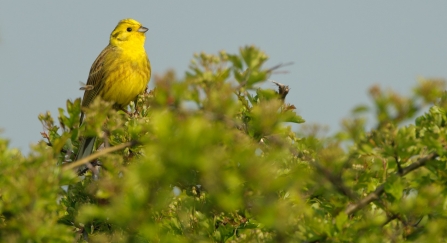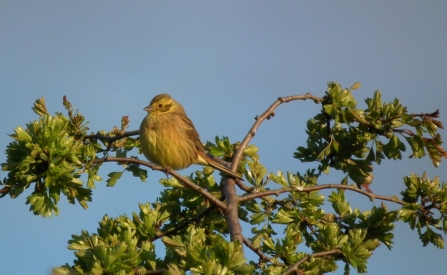Well not really a song, more a repetitive call, often heard as 'a little bit of bread and no cheeeeeese…' The 'cheeeese' is easy to hear, the rest may need some imagination; I always listen out for its call around my home on the Yorkshire Wolds.
The scribble lark
♂ Yellowhammer © Jon Traill

♂ Yellowhammer © Chris Gomersall/2020VISION
The male yellowhammer searches for the highest perches - the topmost branches of a hedge or the electric wires that cross the field in front of our house. Here he calls over and over, announcing his territory to keep other males away and hoping to attract a mate. The duller, but still smartly coloured female is happier down in the hedge. She will seek out the thickest part to make her woven nest, or even nesting down in the grass tussocks on the field side. The greyish blue eggs are marked with darker scattered criss-crossing lines which is where the name scribble lark or scribble bunting is thought to originate.

♀ Yellowhammer © Jon Traill
Once a common and ubiquitous bird of open arable farmland and grass dales, its numbers have dwindled. Its diet of grains and seeds that would once be found amongst the weeds of stubble fields or flower meadows. They are not as easily found today as modern farming has become more efficient. It needs field margins are left with grasses and flowering plants left to set seed in grassland. There the scribble lark can still be seen atop its thorny bushes, calling out to the world on a sunny, spring day.

